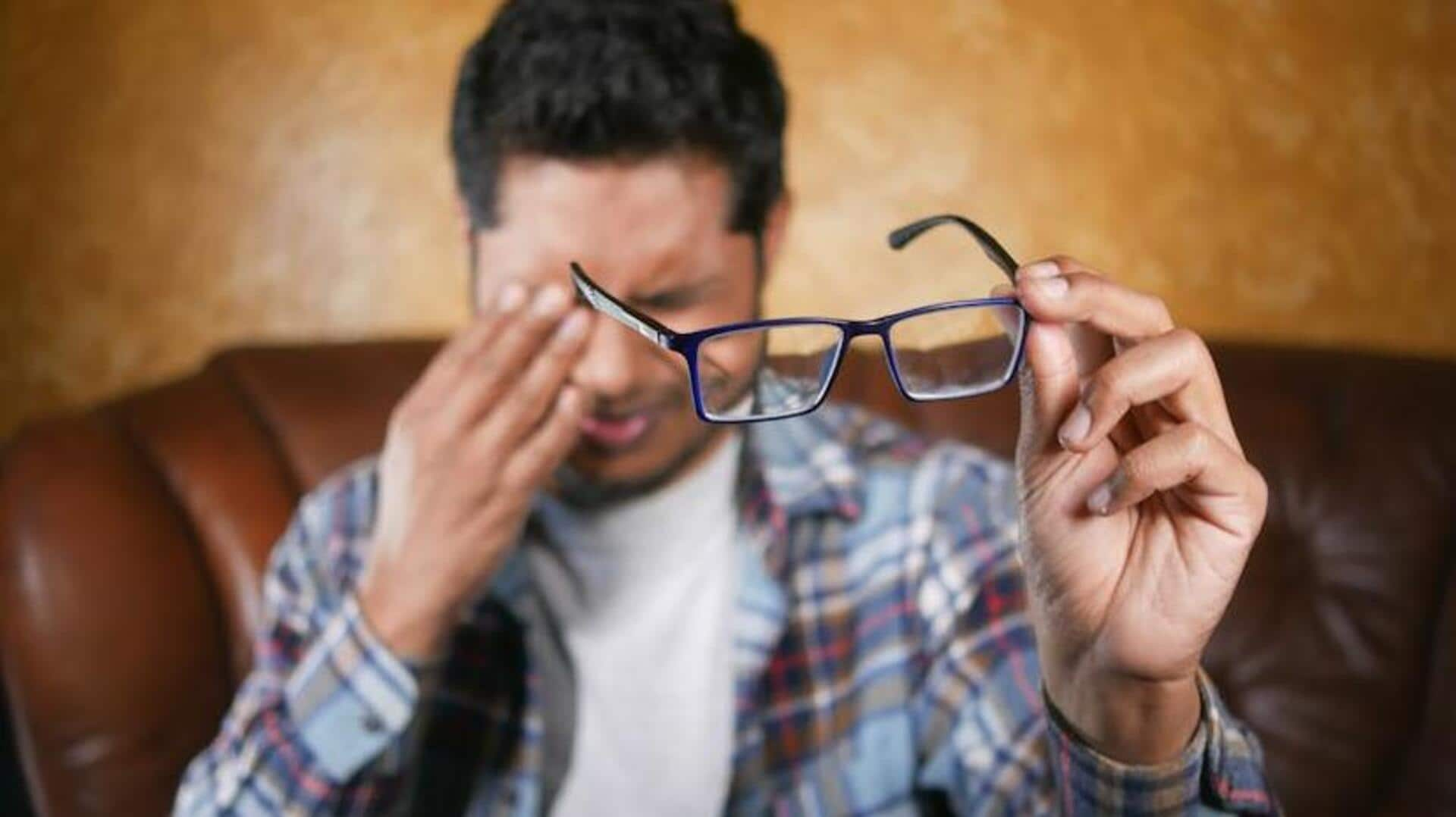
Ways to reduce eye strain with guided visualizations
What's the story
In the digital age, eye strain has become a common issue due to long hours spent in front of screens.
Guided visualizations provide a simple and effective way to relax and refresh your eyes.
This article shares five powerful techniques to help you rest your eyes and enhance your overall well-being.
Distance gazing
Focus on distant objects
To reduce eye strain, implement distance gazing.
Every 20 minutes, take a 20-second break and look at something at least 20 feet away.
This 20-20-20 rule allows your eye muscles to relax and helps prevent fatigue.
By regularly practicing this method, you can significantly minimize discomfort associated with extended screen use.
Palming
Engage in palming exercises
Palming is a simple and gentle exercise.
You rub your hands together to warm them up and then place them over your closed eyes. Make sure not to press down on your eyes.
The heat from your hands relaxes the muscles around your eyes and eases fatigue.
Dedicate two to three minutes to this exercise whenever you experience eye strain or as a preventive measure during breaks.
Mental imagery
Visualize relaxing sceneries
Guided visualization with relaxing landscapes (think beaches or forests) can also help alleviate eye strain.
Simply close your eyes and imagine yourself in these peaceful settings, concentrating on the sounds of the waves or the rustling leaves.
This mental vacation not only gives your eyes a break but also helps relax your whole body. Win-win!
Eye yoga
Practice eye rolling exercises
Eye rolling exercises (part of the so-called "eye yoga") are designed to strengthen and relax the eye muscles.
Simply look up to start, then slowly roll your eyes clockwise for one full circle, and then do another circle anti-clockwise.
Do it three times each way during your breaks from screens.
Deep breathing
Incorporate breathing techniques
Marrying guided visualizations with deep breathing exercises amplifies their power in fighting eye strain.
Whether you're imagining a sunset or practicing the 20-20-20 rule, concentrate on inhaling slowly and deeply through your nose, then exhaling softly through your mouth.
This deep breathing not only calms your body but also boosts oxygen supply to your brain and eyes, further relieving strain.